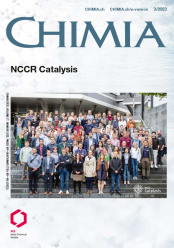
Eliminating Flooding-related Issues in Electrochemical CO₂-to-CO Converters: Two Lines of Defense
The paper authored by
S. Vesztergom,
A. Senocrate, Y. Kong, V. Kolivoška, F. Bernasconi, R. Zboray, C. Battaglia and P. Broekmann
is published in Chimia (NCCR Catalysis special issue, 2023, vol. 77, pp. 104–109).
Abstract:
By using silver (Ag) in nanostructured (nanowire, nanosphere, etc.) or thin-layer form as a catalyst for electrochemical CO2 reduction, very high CO-forming selectivity of almost 100% can be achieved. Supported by gas diffusion layers (GDLs), the reactant CO2 in the gas phase can approach and potentially access active Ag sites, which allows current densities in the range of a few hundred mA cm–2 to be reached. Yet, the stability of gas diffusion electrode (GDE) based electrochemical CO2-to-CO converters is far from perfect, and the activity of GDE cathodes, especially when operated at high current densities, often significantly decays during electrolyses after no more than a few hours. The primary reason of stability losses in GDE-based CO2-to-CO electrolysers is flooding: that is, the excess wetting of the GDE that prevents CO2 from reaching Ag catalytic sites. In the past years, the authors of this paper at Empa and at the University of Bern, cooperating with other partners of the National Competence Center for Research (NCCR) on Catalysis, took different approaches to overcome flooding. While opinions differ with regard to where the first line of defense in protecting GDEs from flooding should lie, a comparison of the recent results of the two groups gives unique insight into the nature of processes occurring in GDE cathodes used for CO2 electrolysis.
